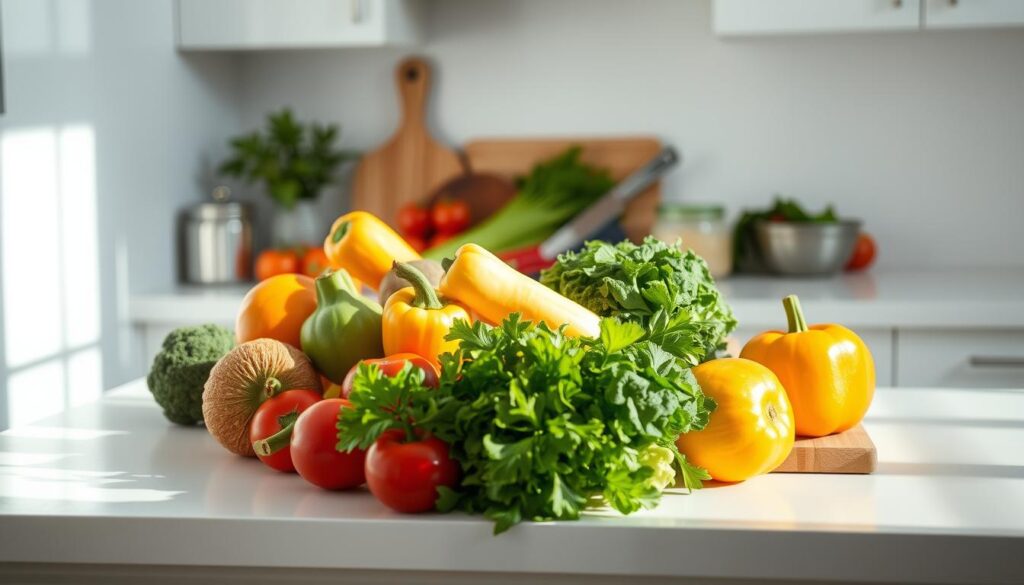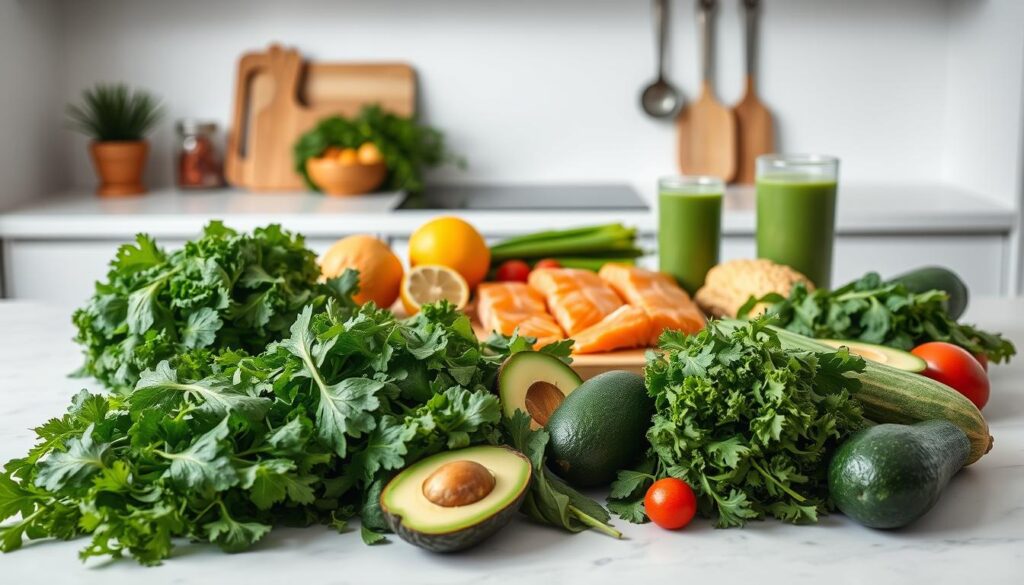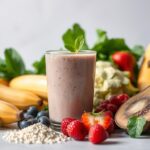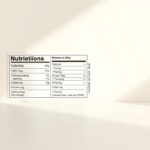Table of Contents
“Healthy Eating Tips” are essential for achieving weight loss and muscle gain. Imagine you’re looking at meal plans, stuck between diets that make you tired and foods that don’t help you lose weight. What if you could eat well to both lose weight and build muscle? This article shows you how. To maximize your results, pair these nutrition tips with an effective workout. Check out our Best Home Workouts for Effective Fitness Results to stay fit while eating right.

Key Takeaways
- Combine weight loss diet strategies with muscle gain nutrition for balanced results.
- Focus on protein-rich foods to preserve muscle while burning fat.
- Time meals around workouts to maximize energy and recovery.
- Choose nutrient-dense foods that keep you full longer.
- Create habits you can stick to long-term without extreme restrictions.
Understanding the Foundation of Healthy Eating Tips for Body Transformation
Well, an appropriate diet for fitness makes your diet really change how food impacts your body. The diet should correspond to certain goals about fat loss and gaining muscles. Insulin and testosterone, or growth hormones, are the best examples of human hormones that are important in energy consumption for most muscle, not fat.
The Science Behind Simultaneous Fat Loss and Muscle Building
Body decomposition needs the right nutrients at the right time. High-protein meal plans allow your body to fix muscles and store fewer fats. Reducing carbs controls the amount of insulin, and even the smallest calorie alterations can grow muscle within the body.
Caloric Deficit vs. Surplus: Finding Your Sweet Spot
Finding the right balance in energy intake is key for healthy eating. A deficit burns fat, but too much can slow muscle growth. Here are some tips:
- Calorie Cycling: Alternate deficit and surplus days
- Meal Timing: Eat every 3-4 hours to keep your metabolism active
- Macronutrient Priorities: Focus on protein first, then carbs/fats
Check your progress weekly and tweak your portions by 100-200 calories as needed.
Macronutrient Basics: Protein, Carbs, and Fats for Body Composition
Each macronutrient plays an important role. Protein: Aim to get between 1.6 and 2.2 grams per kg of body weight per day from foods such as chicken, tofu, or Greek yogurt. Carbohydrates: Choose complex carbohydrates like quinoa or sweet potatoes for steady energy. Fats: Eat sources rich in omega-3s like fish and avocado to support hormonal health. This is based on healthy eating, allowing positive results without major dieting.
Protein-Rich Foods to Prioritize in Your Diet
Considerations for protein-rich diet are building muscle, nutrition, and prolonged satiety for weight loss. Repairing muscle tissue and suppressing hunger makes protein essential for listing good foods for weight loss. Make it a point to gather good sources for hitting daily intake goals.
- Animal proteins: Wild-caught salmon, grass-fed beef, and free-range eggs offer high bioavailability. To avoid excess fat, opt for lean cuts like turkey breast or Greek yogurt.
- Plant-based options: Pair lentils with rice, chickpeas with whole-grain bread, or tofu with quinoa to create complete amino acid profiles.
| Source | PDCAAS Score | Key Benefit |
|---|---|---|
| Whey Protein | 1.0 | Rapid absorption for post-workout recovery. |
| Chicken Breast | 0.91 | Low-calorie, high-protein for muscle gain nutrition. |
| Edamame | 0.72 | Plant-based with fiber for best foods for weight loss. |
Pack in high proteins but less carbohydrates by choosing low-calorie ones such as turkey or shrimp. NOW Foods are a few cost-effective brands that actually sell wonderful pea protein supplements for vegans. Measure portions: 3-4 oz of animal protein per meal and pair it with ½ cup of legumes and grains for a balanced diet. Place value on fresh ingredients over processing so that nutrients can be retained optimally.
Strategic Meal Planning and Timing for Optimal Results
Perfect timing and planning can help make nutrition one of the keys to meeting fitness goals. A well-designed healthy meal plan ensures that every meal prepares you for the workouts, aids with fat loss, and helps with muscle gain. This is how meals match your body’s needs.

Pre- and Post-Workout Nutrition Guidelines
Timing your nutrients right before and after exercise boosts your results. Follow these tips:
- Pre-Workout (30-60 minutes prior): Mix fast carbs with protein, like a banana with whey protein. This gives you energy without slowing down fat burning.
- Post-Workout (30 minutes after): Focus on 20-40g of protein (e.g., chicken or Greek yogurt) with some carbs. This helps repair muscles and replenish energy.
Meal Prep Strategies for Clean Eating Habits
Make clean eating easier with these steps:
- Batch cook staples: Grill chicken, boil eggs, and prep quinoa ahead of time.
- Portion control: Use containers to portion out meals and snacks.
- Freeze smart: Store meals in the freezer with labels for later use.
How to Structure Your Eating Schedule for Fat-Burning
Match meals with your daily routine using this example schedule:
| Time | Meal Type | Food Examples |
|---|---|---|
| 6:30 AM | Breakfast | Scrambled eggs + spinach + 1 slice whole-grain toast |
| 10:30 AM | Snack | Apple + almond butter |
| 1:00 PM | Lunch | Grilled salmon + roasted veggies + brown rice |
| 3:30 PM | Snack | Protein shake + baby carrots |
| 6:30 PM | Post-Workout Recovery | Cottage cheese + berries |
“Consistency beats perfection. Adjust this template to fit your schedule while prioritizing nutrient timing.”
Nutrient-Dense Superfoods That Support Both Weight Loss and Muscle Gain
Maximize your intake of nutrient-rich foods that are beneficial in muscle building and fat burning. They are full of vitamins, fibers, and compounds that may help in boosting metabolism and are anti-inflammatory. Here is how to make them work for you.

- Metabolism Boosters: Add chili peppers, green tea, or cinnamon to meals. These fat-burning foods contain capsaicin and EGCG, temporarily raising burned calories and curbing hunger.
- Muscle-Protecting Greens: Spinach, kale, and broccoli deliver iron, calcium, and antioxidants. Their vitamin C enhances iron absorption, supporting muscle repair.
- High-Satiety Veggies: Brussels sprouts, cauliflower, and chia seeds keep you full longer. Their fiber and water content help control portions without sacrificing nutrients.
Eat foods that can be synergetic when taken together. For example, almonds can be taken along with spinach, where the vitamin C content of the nuts enhances iron absorption from the greens. Cooking methods like steaming and quick sautéing can keep nutrients locked into the food. Of course, go for fresh and frozen, depending on seasonality. Great foods for weight loss provide long-term energy and necessary micronutrients for the retention of lean mass.
Green smoothies might make a great selection, such as spinach and chia seeds or roasted veggies tossed in chili flakes. Some examples include switching regular tea for matcha, adding turmeric to eggs for an added metabolic kick, or switching regular tea for matcha. The key is variety so that nutrients are obtained without adding extra calories.
Conclusion: Creating Sustainable Healthy Eating Habits for Long-Term Fitness
Starting with a few strategies in this article is key to ensuring that changes will last. Clean eating isn’t about the quick fix; it’s about creating positive habits that work in your life. Protein and superfood-based diets increase muscle and fat loss.
Better said, consistency is what matters, not lame perfection that can lead to burnout. Enjoy the ride! Remember that your diet must work for you, not against you.
Keep your flexibility. It will help you stay on the wagon in busy times. Aim for whole foods most of the time, but don’t deny yourself treats.
Another important pillar is tracking your progress. Getting body measurements and energy levels is as important as weighing yourself, if not more so. Adjust your food intake to meet your goals, recognizing that your body is consistently changing.
Meanwhile, develop a healthy relationship with food. Enjoy food, but be aware of portion control and what you eat. Use apps to track how your foods and activities affect you.
All these little changes add up. Avoid soda and sugary snacks; have nuts or Greek yogurt instead. These changes may help you maintain healthy habits in the future.
Long-term success encompasses making these habits a part of your everyday life. Remember to work on your sleep, hydration, and mindful eating practices. Celebrate those small wins, like a slightly better workout or sleep, to keep you motivated.
The success of any diet depends on how well it fits with your values and lifestyle. By focusing on the long game, you are building a strong foundation for fitness and wellness.
FAQ
What are the best foods for weight loss while building muscle?
Protein-heavy food like poultry, lean meat, eggs, and dairy products. Then, add vegetables and other whole grains with good healthy fat: avocados and nuts. This combination is helpful in weight loss and bodybuilding
How can I create a healthy meal plan for weight loss and muscle gain?
Your meal plan would consist of proteins, carbohydrates, and fats. Opt for lean proteins, select complex carbohydrates, and use healthy fats. Meal prep will help maintain cleanliness and consistency in your diet.
Can I lose fat while eating a high-carb diet?
You can lose fat even if you are on a high-carb diet, in the sense that you should eat fewer calories and suffer less.” Eat healthy carbs, and make it happen. Balanced diets for their purpose are the wise way to be inspired.
What role does protein play in weight loss and muscle gain?
Protein is the basic nutrient that boosts muscle repair and growth. It keeps the full, making it very easy to reduce weight. 0.8 to 1.0 grams of protein is recommended per pound of weight.
How often should I eat to maximize fat loss and muscle gain?
There’s a frequency of eating; small meals may help keep the appetite higher and boost metabolism. Intermittent fasting, too, can work by creating a fat-burning window.
What are some clean eating habits I should adopt?
Consume whole and unprocessed foods, including proper protein sources, fruits, vegetables, whole grains, and healthy fats. Avoid sweetened foods and drink plenty of water.
Are there any specific superfoods that enhance weight loss and muscle gain?
The list goes on: include spinach, berries, salmon, and quinoa in your diet. These foods are believed to have nutrients that can boost metabolism and help muscle recovery.
How can I adjust my eating patterns during different phases of my fitness journey?
It should be low-calorie-based with a high protein intake at cutting phases. When it comes to muscle-building phases, increase calories and eat nutrient-dense foods. Always go for balance.





[…] skipping meals to indulging in sugary snacks. To build a strong nutrition foundation, check out our 10 Healthy Eating Tips for Weight Loss and Muscle Gain and fuel your fitness journey the right […]
[…] help you shop wisely and stay healthy. To complement your healthy shopping habits, check out our 10 Healthy Eating Tips for Weight Loss and Muscle Gain for practical nutrition […]